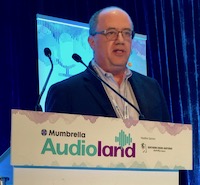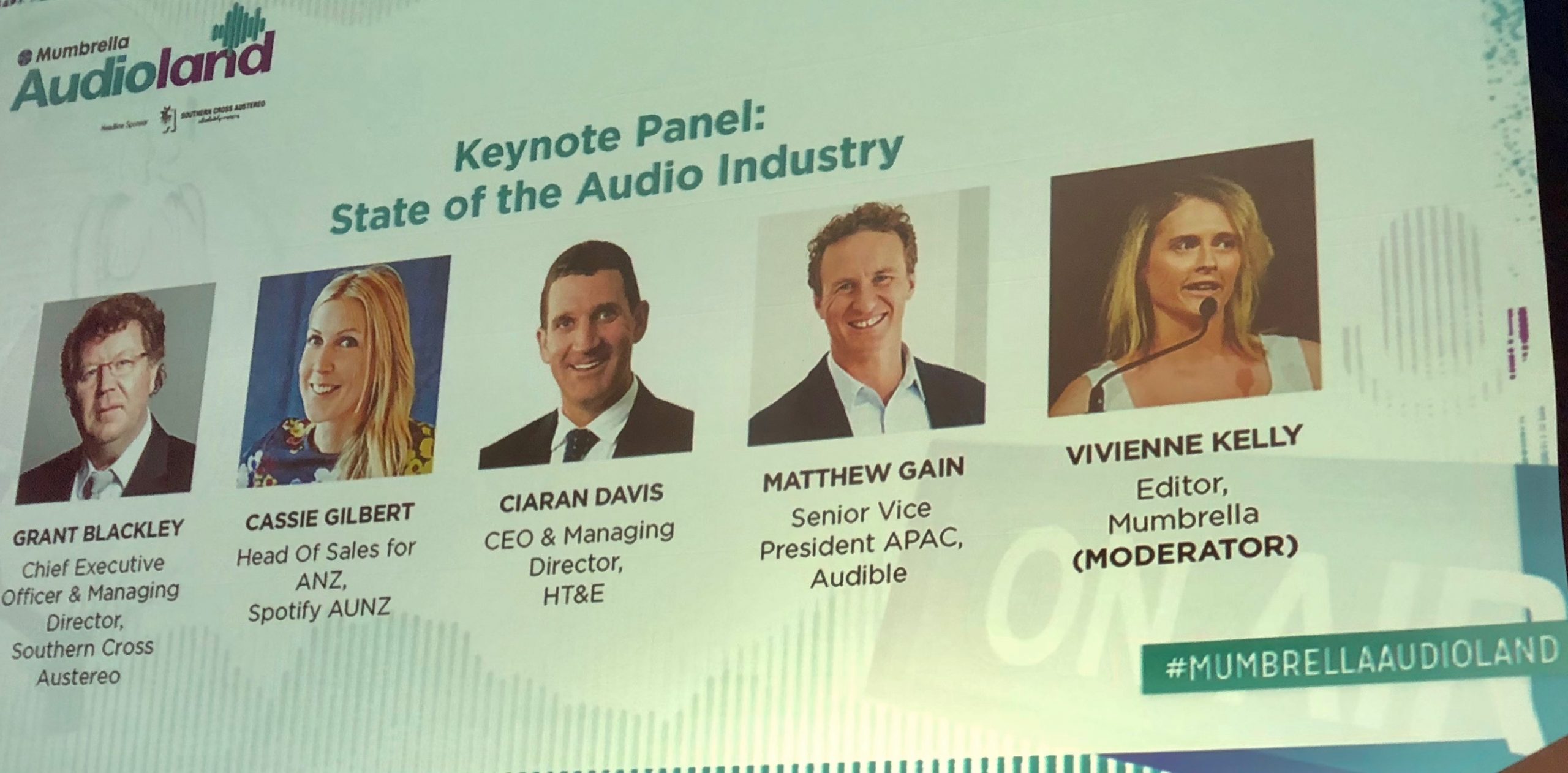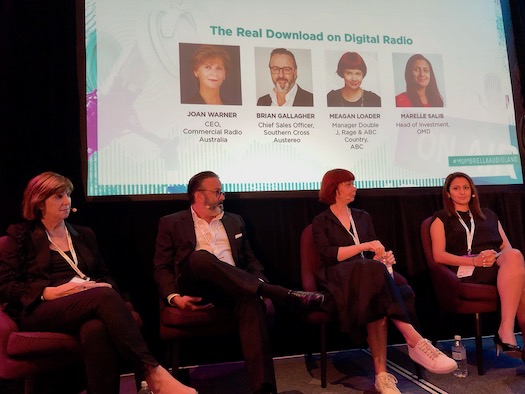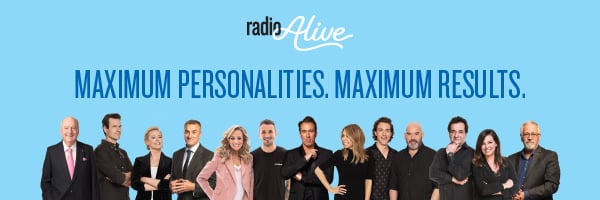Peter Saxon’s postcard from Audioland
Last week, Mumbrella held its inaugural Audioland conference. Judging by the feedback, it won’t be the last.
They were hoping for around 250 attendees. Instead, the conference was a sell-out at around 400.
The general standard of presentations was excellent or better. There were useful take-aways from all the sessions I attended. It’s not that there were many light bulb moments but rather, as is often the case for conferences of this caliber attended by top executives who spend much of their time studying the marketplace, the main benefit is tapping into the prevailing wisdom regarding industry trends and what the future might look like.
 In his presentation of the Infinite Dial study of the Australian market, Edison Research President Larry Rosin (left) found that radio remains far and away the most popular medium in the Audio sector. In cars, for example, 69% of the time, people listen to radio while they only spent 27% of the time listening to owned music or streaming. The study listed 4% of in car listening as “other.”
In his presentation of the Infinite Dial study of the Australian market, Edison Research President Larry Rosin (left) found that radio remains far and away the most popular medium in the Audio sector. In cars, for example, 69% of the time, people listen to radio while they only spent 27% of the time listening to owned music or streaming. The study listed 4% of in car listening as “other.”
He also confirmed what we always suspected: that radio listening remains virtually unaffected by music streaming services. Streaming is merely the latest iteration of owned music which is taking over from the once ubiquitous iPod and CD stacker.
Rosin went on to debunk a number of myths regarding social media usage. Perception and reality are often worlds apart.
When asked to name social media brands of which they were aware, 99% of Australian respondents identified Facebook while Twitter tied for second place with Instagram on 96% and Snapchat came in at #4 with 90%.
However, actual usage is an entirely different matter. Facebook still came out on top with 71% of Australians claiming regular usage. And Instagram is second with 44% but Twitter is in 7th place with just 14% of reported usage behind What’s App (3rd), Snapchat (4th), Pinterest (5th) and LinkedIn (6th).
Another interesting factoid is the emergence of YouTube as a preferred method of music streaming. This Rosin attributes mainly to the ease with which consumers can search YouTube to quickly find a specific song and artist.
After the Infinite Dial presentation, came a panel of heavyweights to discuss the State of the Audio Industry.

What emerged was that Spotify is Radio’s friend. In answer to the moderator’s question: Do you think you can kill radio, Spotify’s Cassie Gilbert said, “I think it’s about how we can work together.” While that drew laughter from some of the cynics among the audience, Ms Gilbert pressed on, insisting, “I genuinely do believe that. I believe this room (filled to the brim) is testament to the appetite for audio. Our audio ecosystem is really strong and I think it’s about how can we make sure we’re providing the right solutions for brands and marketers to us audio.”
SCA’s Grant Blackley was in firm agreement. “We (should) work as a co-operative and expand the audio market. You never know, we might find radio stations being broadcast on Spotify and vice versa.”
What is becoming increasing clear is that Spotify is not in the business of radio any more than record companies are or ever were. Music streamers are based on a global business model that works on economy of scale providing millions of subscribers access to a vast library of music. Radio is at its best when it is live and local. As SCA’s Chief Commercial Officer, Brian Gallagher, said on a later panel about digital radio, ‘People now have the ability to listen to thousands of stations across the planet online. But they don’t because they want to hear local personalities, local news and weather and what the specials are at Coles down the street.’
Double J Manager Meagan Loader added that when people listen to music presented on radio, they want to hear it in a local context.
The last thing a Spotify would want to do is somehow micro-manage radio stations in a myriad individual markets around the world dealing with difficult talent in Sydney or a local advertiser in Horsham.
Friends and frienemies
While radio’s initial fears that streaming services like Pandora, Apple Music and Spotify were about to eat its lunch have abated, there remains a concern about smart speakers – or as some call them smart listeners. It’s true that smart speakers are a new audio platform that radio must embrace as it could replace the traditional radio dial in many homes. To that end Amazon has worked in collaboration with Australian radio for six months in a world first to launch 3,200 ways to ask Alexa about a radio station in this country.
But Alexa is reportedly also working on ways to aggregate radio news the way they are aggregating printed and online news sources.
If that’s the case, then radio news could go the way of newspapers where advertisers pay the aggregators like Facebook and Amazon rather than the original sources that employ journalists to gather and write the news.
A few years ago, when the word “audio” was first bandied about as a substitute for “radio” I was reticent to adopt it. Radio, it seemed, was rapidly going out of style. It was old media. New media, social media was taking its place. Suddenly, the once unique word “radio” with its singular meaning was being co-opted by online music streamers and about to be swallowed whole by the generic term “audio.” Radio had become about as sexy as my great aunt’s hearing aid.
After a day in Audioland, I found that podcasting, smart speakers and music streaming have become the sexy new thing among audiences and advertisers. But far from relegating radio to a “legacy” medium they have helped elevate audio to new heights and with it radio, which remains king.

Peter Saxon


